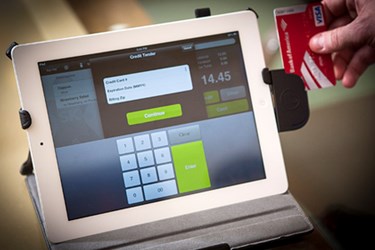Grocery And Convenience Store IT News For VARs — October 1, 2013

By Anna Rose Welch, Editorial & Community Director, Advancing RNA

This week, more on labeling foods “genetically engineered,” changing your approach with c-stores, and reasons your clients will want to manage inventory without waste.
I-522 Could Impact Your Customers
A report from the Washington Research Council claims grocery costs for a family of four could rise by as much as $520 a year should Washington Initiative 522 be passed. The initiative would require foods made using genetically engineered ingredients be labeled. Some of the other opposing arguments include that compliance costs would be too expensive for farmers and businesses and that taxes and state spending would increase. A link to the full report can be found in this article posted by Washington Alliance For a Competitive Economy.
HispanicBusiness.com reports that the Grocery Manufacturer Association (GMA) has launched a new website, FactsaboutGMOs.org. According to Pamela Bailey, president and CEO of GMA, this site was launched to inform citizens and address their questions and concerns about genetically engineered products.
Changing VAR Opportunities At C-Stores
In June, IRI released a new report, “Convenience Stores: Keep the Core; Appeal to More,” exploring how convenience stores can continue growing in a changing shopping landscape. Because of a 9 percent increase in gas prices from 2011 and a decline in cigarette volume sales, the convenience store channel is facing new challenges. Based on the report’s findings, IRI provides four areas of growth for convenience stores looking to improve performance: electronic cigarettes, health and wellness, foodservice, and outdoor advertising.
Beef Prices Expected To Remain High
Grocers might need your help managing inventory. According to Wes Ishmael for Beef Magazine and USDA analysts, August retail Choice beef prices have risen to $5.39/lb. and All Fresh beef reached $4.97/lb. These costs are a result of record-high production costs and drought-reduced supplies, according to Steve Meyer and Len Steiner’s Daily Livestock Report. These prices are expected to remain at this level because of a general decline in year-over-year beef supplies. While consumer willingness-to-pay for steak and hamburger increased from August to September, boxed beef prices must make a positive advancement to please consumers, agricultural economist Andrew Griffith states.
SNAP Cuts Could Deny Assistance To Millions
Make sure your customers are aware of a bill that could impact their sales. According to Supermarket News, the House of Representatives passed a bill that would reduce supplemental nutrition assistance program benefits (food stamps) by $40 billion. According to the charity organization Feeding America, this bill would deny assistance to 4 million people and limit benefits for many more if passed. The Senate and The House now need to compromise in order to draft a comprehensive Farm Bill.
New Labeling Bill Could Require Front-Of-Pack Labels
Supermarket News claims that a new bill — the Food Labeling Modernization Act of 2013 — would require foods to have a front-of-pack nutrition label. The bill also requires that descriptor terms, such as “healthy,” “natural,” and “made with whole grains,” aredefined clearly to ensure consumer confidence.
Grocery/Convenience Store IT Talking Points
Gordon Wade of Category Management Association provides a list of six questions retailers should use to determine if a new product is worth the investment. He argues that, if the product is in fact the “next big thing,” a new product vendor will be able to thoroughly answer all six questions.
Kathie Canning for Private Label Store Brands interviews industry experts about whether it’s in retailers’ best interest to market store brands to more affluent customers ($100,000 to $200,000 salary per year). Susan Viamari, editor of IRI Times and Trends Newsletter, claims that marketers of store brands should consider wealthier customers as part of their target audience. She states that 73 percent of wealthier consumers still expect their finances to decrease or stay the same, and therefore, are drawn to bargains. Pam Danziger from Unity Marketing suggests that retailers position their brands as the “smart shoppers choice” to appeal to their more affluent customers’ “business smarts.”
